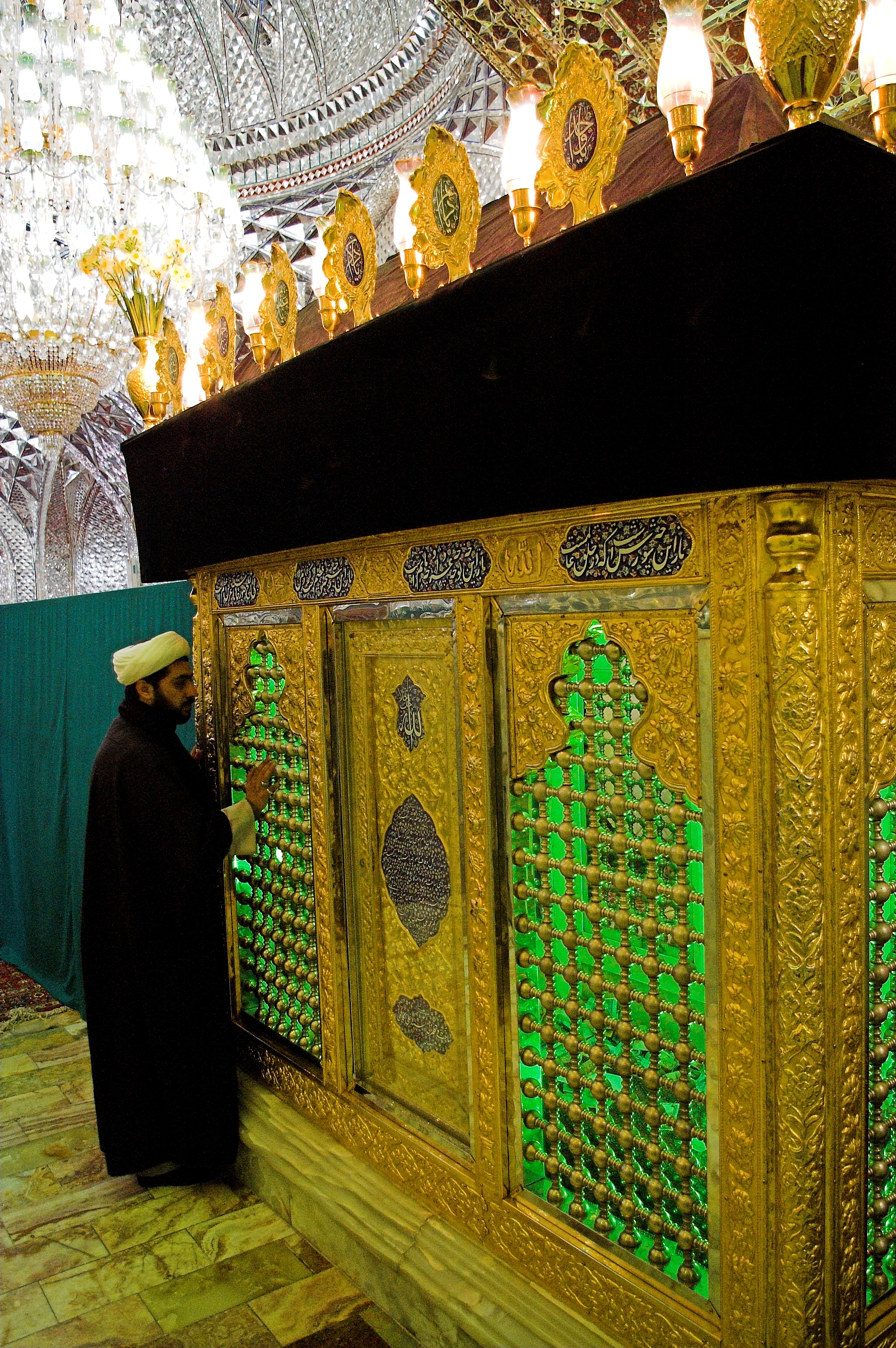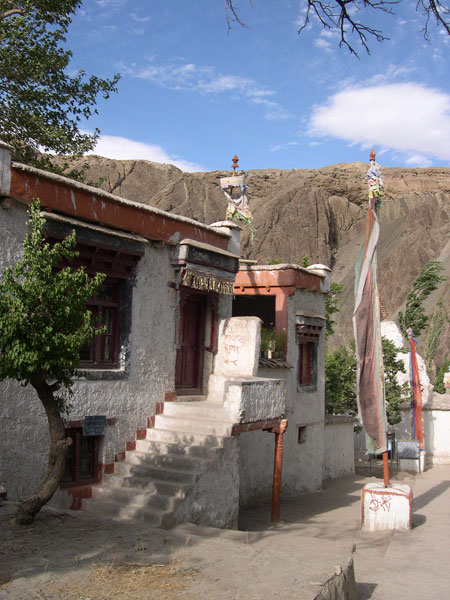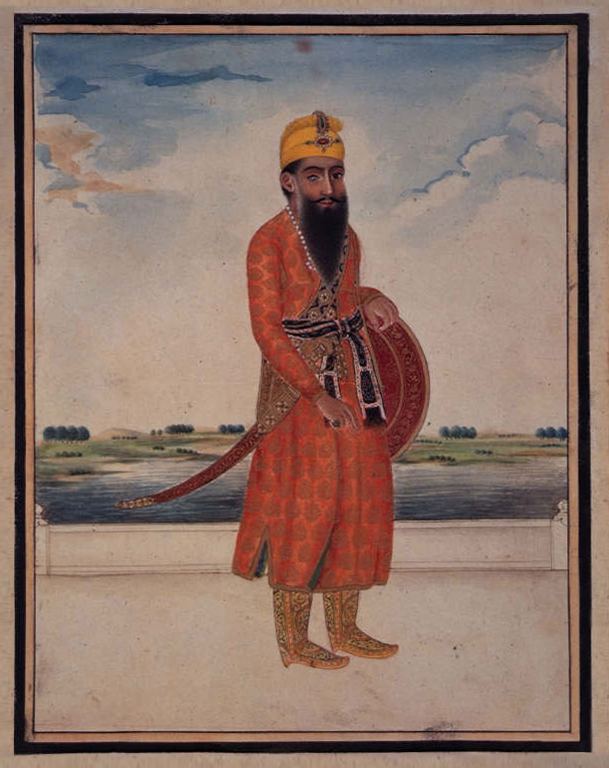|
Qaba
''Qaba'' ( fa, ┘éž©ž¦ŌĆÄ ''qab─ü'') is a long coat with sleeves and buttons, similar to a cassock, open at the front. A qaba is similar to a wadded coat. It is considered as a piece of clothing of Turkic origin. The Mughal emperors wore ankle-length garments. The outfits during the reign of Babur and Humayun are more or less the same, i.e. qaba, jama, pirahan, jilucha, jiba and kasaba. Unlike the jama, which was a four-pointed long-coat the Qaba and takauchia were of a broad girth at the bottom. There are mentions of the qaba in the ''Baburnama''. At present, Qaba is one of the essential parts of the dress of the Islamic clerics or mosque leaders. See also * Ammama * Chiltah Gallery File:Royal drinking scene in the Dukhang at Alchi Monastery, circa 1200 CE.jpg, Royal drinking scene in the Dukhang at Alchi Monastery, circa 1200 CE. The king wears a decorated Qab─ü'. File:Babur and Humayun.jpg, upBabur and his heir Humayun Nasir-ud-Din Muhammad ( fa, ) (; 6 March 1508 ... [...More Info...] [...Related Items...] OR: [Wikipedia] [Google] [Baidu] |
Chiltah
Chiltah was a Mughal period outer garment. It resembled a quilted coat. Chiltah was a royal garment. Jahangir, the fourth Mughal Emperor, wore a nadiri garment with a chiltah. Etymology Chiltah is a corrupted word of ''Chihalta'' that was a multilayer coat worn by soldiers. See also * Qaba ''Qaba'' ( fa, ┘éž©ž¦ŌĆÄ ''qab─ü'') is a long coat with sleeves and buttons, similar to a cassock, open at the front. A qaba is similar to a wadded coat. It is considered as a piece of clothing of Turkic origin. The Mughal emperors wore ankle-len ... References Coats (clothing) Mughal clothing {{Mughal-stub ... [...More Info...] [...Related Items...] OR: [Wikipedia] [Google] [Baidu] |
Mullah
Mullah (; ) is an honorific title for Shia and Sunni Muslim clergy or a Muslim mosque leader. The term is also sometimes used for a person who has higher education in Islamic theology and sharia law. The title has also been used in some Mizrahi and Sephardic Jewish communities to refer to the community's leadership, especially religious leadership. Etymology The word ''mullah'' is derived from the Arabic word ''mawl─ü'' ( ar, ┘ģ┘Ä┘ł┘Æ┘ä┘Ä┘ē), meaning "vicar", "master" and "guardian". Usage Historical usage The term has also been used among Persian Jews, Bukharan Jews, Afghan Jews, and other Central Asian Jews to refer to the community's religious and/or secular leadership. In Kaifeng, China, the historic Chinese Jews who managed the synagogue were called "mullahs". Modern usage It is the term commonly used for village or neighborhood mosque leaders, who may not have high levels of religious education, in large parts of the Muslim world, particularly Iran, Turkey, ... [...More Info...] [...Related Items...] OR: [Wikipedia] [Google] [Baidu] |
Alchi Monastery
Alchi Monastery or Alchi Gompa (also Alci) is a Tibetan Buddhist monastery, known more as a monastic complex (chos-'khor) of temples in Alchi village in the Leh District, under the Ladakh Autonomous Hill Development Council of the Ladakh Union Territory. The complex comprises four separate settlements in the Alchi village in the lower Ladakh region with monuments dated to different periods. Of these four hamlets, Alchi monastery is said to be the oldest and most famous. It is administered by the Likir Monastery. Alchi is also part of the three villages (all in lower Ladakh region) which constitute the ŌĆśAlchi group of monumentsŌĆÖ; the other two villages adjoining Alchi are the Mangyu and Sumda Chun. The monuments in these three villages are stated to be of "unique style and workmanshipŌĆÖ, but the Alchi monastic complex is the best known. The monastery complex was built, according to local tradition, by the great translator Guru Rinchen Zangpo between 958 and 1055. Howeve ... [...More Info...] [...Related Items...] OR: [Wikipedia] [Google] [Baidu] |
Enthroned Person Wearing A Qaba Dress Xith Tiraz Armbands, Kashan, Late 12th Early 13th Century CE
Enthroned is a Belgian black metal band formed in Charleroi. It is one of the premier acts of the Belgian black metal scene. History The band was founded in 1993 by drummer Cernunnos. He soon recruited guitarist Tsebaoth and a vocalist from grindcore/black metal band Hecate who stayed until the end of December 1993. Then bassist/vocalist Sabathan joined. The band released a five-track demo tape in mid-1994 which brought them to the attention of several independent labels. A 7-inch split EP with Ancient Rites was then released by the underground label Afterdark Records. After the label's demise, Evil Alliance Records (a sub-label of Osmose Productions) released Enthroned's first full-length release, '' Prophecies of Pagan Fire''. Shortly thereafter, the band enlisted second guitarist Nornagest. Eventually, Tseboath was replaced by Nebiros. In 1996, along with Ancient Rites and Bewitched, Enthroned began an extensive tour of Europe. In April 1997, as Enthroned was to begin reco ... [...More Info...] [...Related Items...] OR: [Wikipedia] [Google] [Baidu] |
Cassock
The cassock or soutane is a Christian clerical clothing coat used by the clergy and male religious of the Oriental Orthodox Churches, Eastern Orthodox Church and the Catholic Church, in addition to some clergy in certain Protestant denominations such as Anglicans and Lutherans. "Ankle-length garment" is the literal meaning of the corresponding Latin term, . It is related to the habits traditionally worn by nuns, monks, and friars. The cassock derives historically from the tunic of classical antiquity that in ancient Rome was worn underneath the toga and the chiton that was worn beneath the himation in ancient Greece. In religious services, it has traditionally been worn underneath vestments, such as the alb. In the West, the cassock is little used today except for religious services, save for traditionalist and those other Catholic clergy and religious who continue to wear the cassock as their standard attire. However, in many countries it was the normal everyday wear ... [...More Info...] [...Related Items...] OR: [Wikipedia] [Google] [Baidu] |
Mughal Emperors
The Mughal emperors ( fa, , P─üdish─üh─ün) were the supreme heads of state of the Mughal Empire on the Indian subcontinent, mainly corresponding to the modern countries of India, Pakistan, Afghanistan and Bangladesh. The Mughal rulers styled themselves as "padishah", a title usually translated from Persian as "emperor". They began to rule parts of India from 1526, and by 1707 ruled most of the sub-continent. After that they declined rapidly, but nominally ruled territories until the Indian Rebellion of 1857. The Mughals were a branch of the Timurid dynasty of Turco-Mongol origin from Central Asia. Their founder Babur, a Timurid prince from the Fergana Valley (modern-day Uzbekistan), was a direct descendant of Timur (generally known in western nations as Tamerlane) and also affiliated with Genghis Khan through Timur's marriage to a Genghisid princess. Many of the later Mughal emperors had significant Indian Rajput and Persian ancestry through marriage alliances as emperors wer ... [...More Info...] [...Related Items...] OR: [Wikipedia] [Google] [Baidu] |
Babur
Babur ( fa, , lit= tiger, translit= B─übur; ; 14 February 148326 December 1530), born M─½rz─ü Zah─½r ud-D─½n Muhammad, was the founder of the Mughal Empire in the Indian subcontinent. He was a descendant of Timur and Genghis Khan through his father and mother respectively.F. Lehmannß║Æah─½r-al-D─½n MoßĖźammad B─übor In Encyclop├”dia Iranica. Online Ed. December 1988 (updated August 2011). "B─übor, ß║Æah─½r-al-D─½n MoßĖźammad son of Umar Sheikh Mirza, (6 MoßĖźarram 886-6 Jom─üd─ü I 937/14 February 1483 ŌĆō 26 December 1530), Timurid prince, military genius, and literary craftsman who escaped the bloody political arena of his Central Asian birthplace to found the Mughal Empire in India. His origin, milieu, training, and education were steeped in Muslim culture and so B─übor played significant role for the fostering of this culture by his descendants, the Mughals of India, and for the expansion of Islam in the Indian subcontinent, with brilliant literary, artistic, and histo ... [...More Info...] [...Related Items...] OR: [Wikipedia] [Google] [Baidu] |
Humayun
Nasir-ud-Din Muhammad ( fa, ) (; 6 March 1508 ŌĆō 27 January 1556), better known by his regnal name, Hum─üy┼½n; (), was the second emperor of the Mughal Empire, who ruled over territory in what is now Eastern Afghanistan, Pakistan, Northern India, and Bangladesh from 1530 to 1540 and again from 1555 to 1556. Like his father, Babur, he lost his empire early but regained it with the aid of the Safavid dynasty of Persia, with additional territory. At the time of his death in 1556, the Mughal Empire spanned almost one million square kilometres. In December 1530, Humayun succeeded his father to the throne of Delhi as ruler of the Mughal territories in the Indian subcontinent. Humayun was an inexperienced ruler when he came to power, at the age of 22. His half-brother Kamran Mirza inherited Kabul and Kandahar, the northernmost parts of their father's empire. The two half-brothers would become bitter rivals. Humayun lost Mughal territories to Sher Shah Suri, but regained them 15 ... [...More Info...] [...Related Items...] OR: [Wikipedia] [Google] [Baidu] |
Jama (coat)
The term jama ( Hindustani: Óż£ÓżŠÓż«ÓżŠ, ž¼ž¦┘ģ ; Bengali: Ó”£Ó”ŠÓ”«Ó”Š; Odia: Ó¼£Ó¼ŠÓ¼«Ó¼Š ) refers to a long coat which was popular in South Asia during the Mughal period. Styles ]Some styles of the jama were tight around the torso but flared out like a skirt to below the knees or the ankles. * The chakman jama, ended at around the knees. The sleeves tended to be full. The jama was fastened to either side with strings with some styles also opening at the front. What was originally male dress was also adopted by women who wore the jama with a scarf and tight fitting pajamas. The ties of the upper half of the jama are taken under the armpit and across the chest. * ''Chakdar jama'' Jama with chaks (slits) was a particular style of jama. It was the pointed jama which was like the standard Mughal jama but the skirt fell in four to six points instead of the circular hem of the Mughal jama. This jama may be derived from the Rajput court's takauchiah and therefore could be of loca ... [...More Info...] [...Related Items...] OR: [Wikipedia] [Google] [Baidu] |
Baburnama
The ''B─üburn─üma'' ( chg, ; literally: ''"History of Babur"'' or ''"Letters of Babur"''; alternatively known as ''Tuzk-e Babri'') is the memoirs of ß║Æah─½r-ud-D─½n Muhammad B─übur (1483ŌĆō1530), founder of the Mughal Empire and a great-great-great-grandson of Timur. It is written in the Chagatai language, known to Babur as ''T├╝rki'' ("Turkic"), the spoken language of the Andijan-Timurids. During the reign of emperor Akbar, the work was translated into Persian, the usual literary language of the Mughal court, by a Mughal courtier, Abdul Rahim Khan-i-Khanan, in AH 998 (1589ŌĆō90 CE). B─übur was an educated Timurid prince and his observations and comments in his memoirs reflect an interest in nature, society, politics and economics. His vivid account of events covers not just his own life, but the history and geography of the areas he lived in as well as the people with whom he came into contact. The book covers topics as diverse as astronomy, geography, statecraft, military m ... [...More Info...] [...Related Items...] OR: [Wikipedia] [Google] [Baidu] |
Clerical Clothing
Clerical clothing is non-liturgical clothing worn exclusively by clergy. It is distinct from vestments in that it is not reserved specifically for use in the liturgy. Practices vary: clerical clothing is sometimes worn under vestments, and sometimes as the everyday clothing or street wear of a priest, minister, or other clergy member. In some cases, it can be similar or identical to the habit of a monk or nun. In modern times, many Christian clergy have adopted the use of a shirt with a clerical collar; but the use of clerical clothing is most commonly among Catholic, Anglican, Oriental Orthodox, and Eastern Orthodox clergy. Catholicism (Latin Rite) In 1215, the Fourth Lateran Council made it mandatory for all the Christian clergy to wear distinctive dress. Its purpose was not necessary to elevate the status of the Christian clerics; it was intended that they would catch the public eye if any member of the clergy is seen on the street. However, the rules at the time were ... [...More Info...] [...Related Items...] OR: [Wikipedia] [Google] [Baidu] |
Ammama
Ammama or 'Emma (Arabic: ž╣┘ģž¦┘ģž®; Egyptian Arabic: ž╣┘ģž® IPA: ł╩Ģem.m├”or AMM─ĆMA, Arabic ╩┐EM─ĆMA) is a type of turban that is religiously significant to Muslims. Men in Egypt Egypt ( ar, ┘ģžĄž▒ , ), officially the Arab Republic of Egypt, is a transcontinental country spanning the northeast corner of Africa and southwest corner of Asia via a land bridge formed by the Sinai Peninsula. It is bordered by the Mediter ... or Sudan usually wear an 'emma with the jellabiya dress. Wearing this headgear symbolizes authority, strength and honor. See also *Jellabiya References Arabic clothing Headgear Religious headgear Turbans, * Middle Eastern clothing Dresses Islamic male clothing {{islam-stub ... [...More Info...] [...Related Items...] OR: [Wikipedia] [Google] [Baidu] |







